On this page, you’ll find a selection of flowers perfect for late planting, ensuring your garden bursts into life with stunning brightness and color.
Sweet Peas
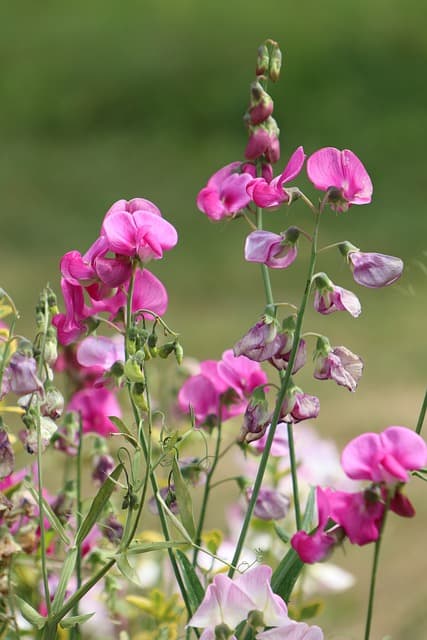
Sweet peas (Lathyrus odoratus) are one of the most cherished flowers in spring gardens due to their exquisite fragrance and delicate blooms. They are vining plants that can grow up to eight feet tall, making them ideal for trellises, fences, or garden arches. Sweet peas come in a variety of colors, from pale pastels to bold hues, and their sweet scent is often associated with the arrival of spring.
To plant sweet peas, begin by soaking the seeds in water overnight. This helps to soften the hard seed coat and promotes germination. Choose a sunny spot with well-drained soil that has been enriched with organic compost. You should plant the seeds about two inches apart and bury them around 1 inch deep.
As the plants grow, they will need support, so adding a trellis or some form of vertical support is essential. Regular watering ensures healthy growth, but be careful not to overwater, as sweet peas dislike soggy soil. With proper care, you can expect to see beautiful blooms as early as May, making them perfect for cutting and bringing indoors to fill your home with their delightful fragrance.
Poppies

Poppies (Papaver spp.), particularly the annual varieties like California poppies (Eschscholzia californica), are stunning spring flowers that can elevate any garden design. Characterized by their vibrant, silky petals and unique structure, poppies are not only beautiful but also easy to grow, making them a fantastic choice for early planting. They thrive in cooler temperatures and can be sown directly in the garden as soon as the soil is workable—typically 4-6 weeks before the last frost.
When planting poppy seeds, you don’t need to cover them extensively; they require light for germination. Simply sprinkle the seeds on the soil surface and lightly press them in. Poppies prefer well-draining soil and full sunlight. Once they emerge, their bright colors can mingle harmoniously with other early bloomers, creating a joyful palette of hues.
The blooms typically reach their peak in late spring to early summer, and once they fade, they produce striking seed pods that add interest to the garden. For an added benefit, many poppy varieties attract pollinators, supporting a thriving garden ecosystem.
Pansies
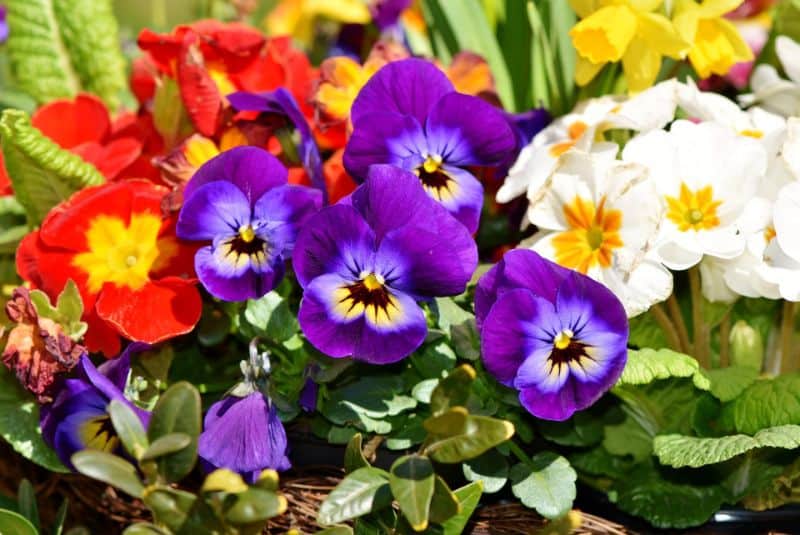
Pansies (Viola tricolor var. hortensis) are cheerful, versatile flowers revered for their vast array of colors and patterns. With faces that seem to smile back at you, pansies are perfect for early spring planting. They thrive in cooler temperatures and can generally tolerate light frosts, allowing them to bloom early in the season.
Plant your pansy seeds or young plants in rich, well-draining soil with good airflow. They should be spaced about 6-8 inches apart to allow for growth, and they thrive in full to partial sun. Pansies are particularly well-suited for borders, window boxes, and containers, where their colors can be admired up close.
If you want to encourage continuous blooming, be sure to deadhead spent flowers regularly. In addition to their beauty, pansies are edible and can make delightful garnishes for salads or desserts, adding a touch of color and flavor to your culinary presentations.
Calendula

Calendula (Calendula officinalis) is a radiant flower also known as pot marigold. With its bright orange and yellow blooms, calendula is much-loved for both its beauty and its wide array of uses. This hardy annual plant is excellent for early spring planting, as it tolerates frost and can bloom as soon as late spring.
Plant calendula seeds about 4-6 weeks before the last frost in well-drained soil enriched with organic matter. Sow the seeds about 1/4 inch deep and space them at least 10-12 inches apart for optimal growth. Calendula thrives in full sun but can also tolerate partial shade.
These flowers not only bring color to your garden but also attract beneficial insects like bees and butterflies. Moreover, calendula has a long history of use for medicinal purposes, often utilized in salves, ointments, and teas. Harvesting the petals allows you to enjoy their culinary possibilities, adding a unique touch to various dishes. The blooms can also be dried for herbal remedies, creating a sustainable cycle of gardening and use.
Bachelor Buttons
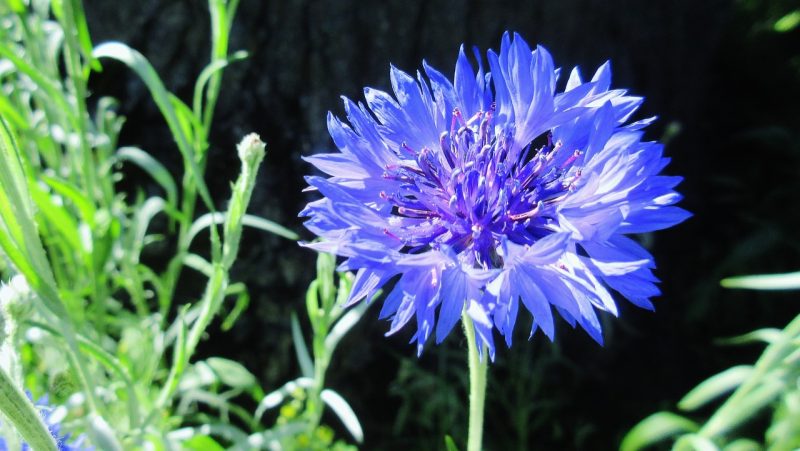
Bachelor buttons (Centaurea cyanus), also known as cornflowers, are delightful annual flowers showcasing bright blue blooms that are perfect for early spring planting. They are easy to grow, making them a favorite for novice gardeners as well as experienced green thumbs. Bachelor buttons thrive in well-drained soils and can be directly sown 1-2 weeks before the last frost date.
To plant bachelor buttons, scatter the seeds on the soil surface and lightly rake them in. The seeds require light to germinate, so avoid burying them too deeply. These flowers flourish in full sun and bloom profusely through the spring and into the summer, captivating visitors with their vibrant color and grassy foliage.
Bachelor buttons are also remarkably durable; they can tolerate dry conditions once established and are suitable for both cutting gardens and wildflower meadows. Their blooms not only add beauty but also attract bees and butterflies, further enhancing your garden’s ecosystem. Use them in bouquets to enjoy their lasting freshness indoors, as cut bachelor buttons can last up to a week in water.
Snapdragons
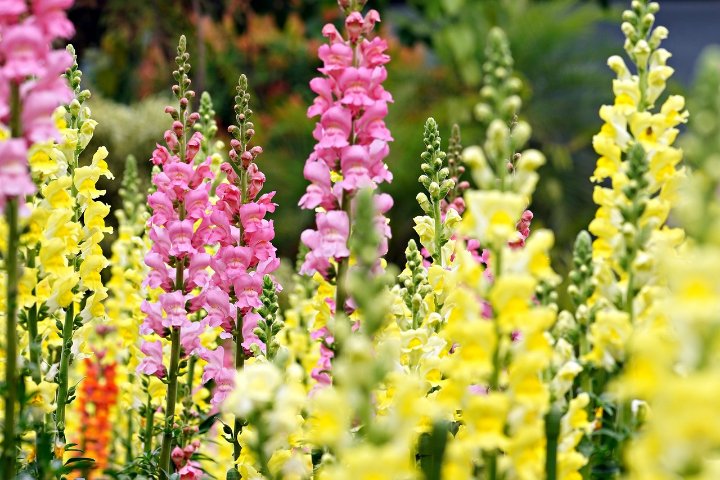
Snapdragons (Antirrhinum majus) are elegant, tall flowers that can bring drama and texture to your garden design. With their unique, tubular flowers resembling a dragon’s mouth, snapdragons come in a stunning range of pastel and vibrant colors. They are frost-tolerant and can be planted about 4-6 weeks before the last frost date.
When planting snapdragons, they thrive in well-drained soil with full sun exposure. Seeds can be either sown directly into the soil or started indoors for earlier blooms. Space the plants appropriately, allowing for good airflow to reduce the chance of fungal diseases.
Snapdragons produce stunning vertical spikes that can reach heights between 1 and 3 feet, making them perfect for garden borders or cutting arrangements. They are also known for their ability to attract hummingbirds and pollinators, adding life to your garden. Their lush blooms can last throughout the spring and early summer, and when cut for arrangements, they will add a sophisticated touch filled with vibrant colors.
Rudbeckia (Black-eyed Susans)
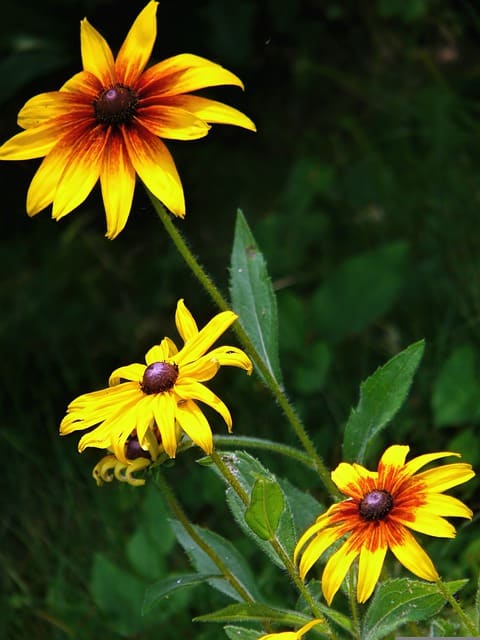
Rudbeckia, commonly known as black-eyed Susans, are perennial flowers beloved for their sunny yellow petals and dark brown centers. They are exceptionally hardy and can thrive in a variety of conditions, making them a reliable choice for early spring planting. Black-eyed Susans can be sown directly in the garden about 1-2 weeks before the last frost date.
These flowers prefer well-drained soil and full sunlight, although they can adapt to some shade. Plant seeds about 1/4 inch deep and spaced adequately to allow for growth, as they can spread significantly. Black-eyed Susans will typically bloom from mid to late summer, often lasting until fall, and they create striking displays when planted in groups.
One of the benefits of planting rudbeckia is its ability to attract a wide range of pollinators, including bees and butterflies, greatly enhancing the biodiversity of your garden. They can also serve as an excellent cut flower, brightening indoor spaces with their cheerful appearance. Their tolerance of drought once established makes them low-maintenance, ensuring that they are a long-term addition to your garden.
Stock
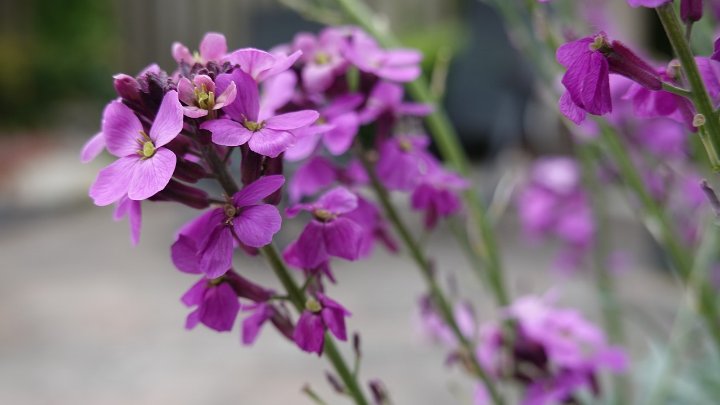
Stock (Matthiola incana) flowers are well-known for their delightful fragrance and beautiful blooms. They come in numerous colors and are ideal for any early spring planting scheme. Stock thrives in cooler temperatures and can tolerate light frosts, making them perfect for gardens waiting for warmer weather.
To grow stocks, plant seeds about 4-6 weeks before your last frost. They enjoy well-drained soil enriched with organic matter and prefer full sun or slight shade. When planting, space the seedlings adequately to allow for air circulation, which helps prevent fungal growth.
The flowers of stock are not only stunning in the garden, but they also have a sweet scent that makes them popular in bouquets and floral arrangements. With proper care, stocks can offer blooms from spring through to summer. Their abundance of colors can create a spectacular display, adding height and beauty to any flower bed.
Clarkia
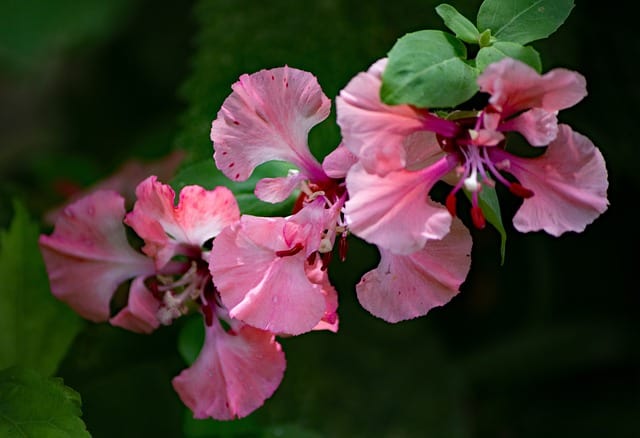
Clarkia (Clarkia unguiculata) is a lesser-known yet breathtaking annual flower often referred to as “farewell-to-spring.” This flower is recognized for its charming, cup-shaped blooms, exhibiting a variety of soft pastel colors from pinks to purples. Clarkia thrives in cooler spring temperatures and can be planted 1-2 weeks before the last frost.
Plant clarkia seeds in well-drained soil, ensuring they receive ample sunlight. They can be sown directly into the garden bed, and their delicate, tall blooms will provide a lovely display starting from late spring through the summer. Clarkia creates beautiful clusters, making it a great choice for borders, wildflower gardens, or naturalizing spaces.
These flowers are relatively easy to grow and will add a touch of elegance to your garden without requiring extensive care. Cut clarkia stems can last up to a week in water, providing a soft, romantic feel in your floral arrangements while inviting pollinators like butterflies to your garden.
Forget-me-nots
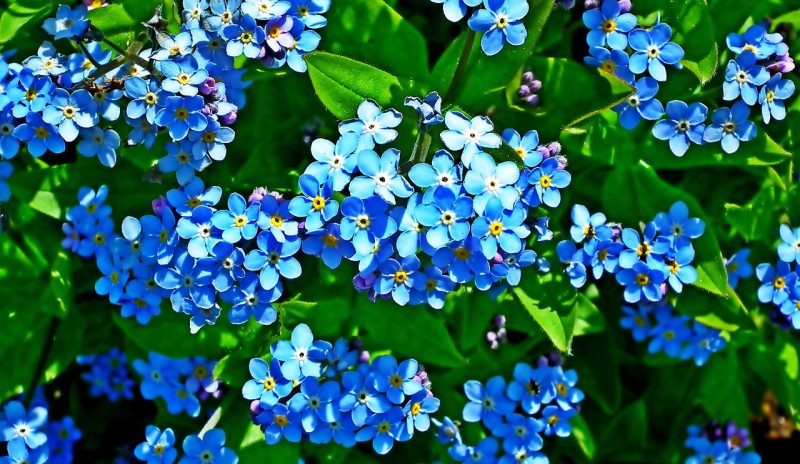
Forget-me-nots (Myosotis spp.) are enchanting little flowers that symbolize remembrance and connection. They produce clusters of tiny, blue blooms that can gently carpet your garden, creating beautiful splashes of color in shaded areas. These hardy perennials should be sown 4-6 weeks before the last frost to give them a head start.
Forget-me-nots thrive in moist, well-drained soil and prefer partial to full shade. To plant, simply sprinkle the seeds on the surface of the soil, as light aids germination. Once established, forget-me-nots will self-seed, creating a naturalized effect that fills your garden with beauty year after year.
Beyond their attractiveness, forget-me-nots serve a purpose in the ecosystem by attracting beneficial pollinators like bees and butterflies. The blooms can be harvested and used in culinary applications, including salads or as garnishes, creating a charming connection between your kitchen and garden.
Larkspur
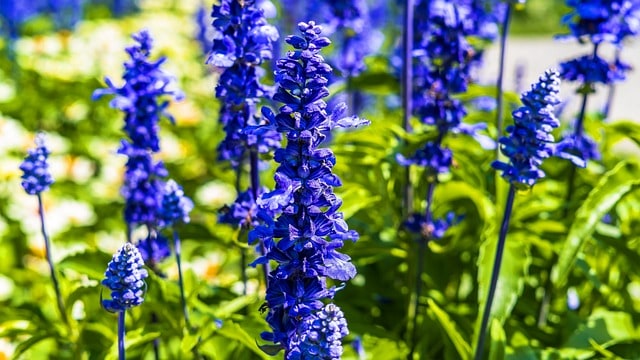
Larkspur (Delphinium spp.) is a beautiful flower that showcases stunning cascades of blooms in towering spikes. These annual and biennial flowers can be breathtaking additions to any spring garden with their rich hues of blue, purple, pink, and white. Larkspur seeds should be planted directly into the garden about 1-2 weeks before the last frost date.
Larkspur flourishes in well-drained soil and thrives best in full sun. When planting, be mindful to space them adequately, as they can grow quite tall, often reaching heights of 3 to 5 feet. As they grow, larkspur will provide impressive vertical interest that draws the eye and enlivens your garden.
These flowers not only bring beauty and elegance to your garden but also attract pollinators, making them a fantastic choice for those looking to create a vibrant ecosystem. While larkspur is excellent for cutting flowers, they do have a shorter bloom time. Therefore, consider planting them alongside other early bloomers to ensure a continual display of color and charm.
Rudbeckia (Black-eyed Susans)

Returning to Rudbeckia offers an opportunity to emphasize why this perennial flower’s value is unmatched. Commonly known as black-eyed Susans, these charming flowers produce cheery yellow petals surrounding a dark brown center and easily adapt to a wide range of soil conditions. Planting rudbeckia early ensures vibrant blooms in summer, typically extending into the fall.
These flowers are especially effective in mass plantings, creating a striking visual display that can also be effective in naturalizing and enhancing wildlife habitats in your garden. They are drought-tolerant once established, making them low-maintenance yet dynamic additions to your garden scheme. Growing black-eyed Susans can foster a sense of community in your garden, as their blooms attract bees, butterflies, and birds, contributing to local biodiversity.
Whether planted in traditional garden beds, cottage-style gardens, or even alongside wildflowers, rudbeckia provides a cheerful presence and a low-maintenance option for gardeners. Their cut blooms also brighten indoor arrangements, making them a versatile and valued choice in both gardens and homes.





